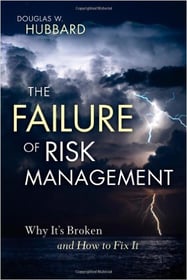
Security risk assessment services are crucial in the cybersecurity industry as they help organizations identify, analyze, and mitigate potential security risks to their systems, networks, and data. Here are some opportunities for providing security risk assessment services within the industry:
- Conducting Vulnerability Assessments: As a security risk assessment service provider, DISC can conduct vulnerability assessments to identify potential vulnerabilities in an organization’s systems, networks, and applications. You can then provide recommendations to mitigate these vulnerabilities and enhance the organization’s overall security posture.
- Performing Penetration Testing: Penetration testing involves simulating a real-world attack on an organization’s systems and networks to identify weaknesses and vulnerabilities. As a security risk assessment service provider, DISC can perform penetration testing to identify potential security gaps and provide recommendations to improve security.
- Risk Management: DISC can help organizations identify and manage risks associated with their information technology systems, data, and operations. This includes assessing potential threats, analyzing the impact of these threats, and developing plans to mitigate them.
- Compliance Assessment: DISC can help organizations comply with regulatory requirements by assessing their compliance with industry standards such as ISO 27001, HIPAA, or NIST-CSF. DISC can then provide recommendations to ensure that the organization remains compliant with these standards.
- Cloud Security Assessments: As more organizations move their operations to the cloud, there is a growing need for security risk assessment services to assess the security risks associated with cloud-based systems and applications. As a service provider, DISC can assess cloud security risks and provide recommendations to ensure the security of the organization’s cloud-based operations.
- Security Audit Services: DISC can provide security audit services to assess the overall security posture of an organization’s systems, networks, and applications. This includes reviewing security policies, processes, and procedures and providing recommendations to improve security.
By providing these services, DISC can help organizations identify potential security risks and develop plans to mitigate them, thereby enhancing their overall security posture.
In what situations would a vCISO Service be appropriate?
Transition plan from ISO 27001 2013 to ISO 27001 2022
We’d love to hear from you! If you have any questions, comments, or feedback, please don’t hesitate to contact us. Our team is here to help and we’re always looking for ways to improve our services. You can reach us by email (info@deurainfosec.com), or through our website’s contact form
Contact DISC InfoSec if you need further assistance in your ISO 27001 2022 transition Plan
InfoSec Threats | InfoSec books | InfoSec tools | InfoSec services















![Reblog this post [with Zemanta]](https://img.zemanta.com/reblog_e.png?x-id=28dcae72-914e-4823-9632-cd34145194b7)


![Reblog this post [with Zemanta]](https://img.zemanta.com/reblog_e.png?x-id=f4c7607a-8a48-4ed1-bba2-9bb41450aa23)


